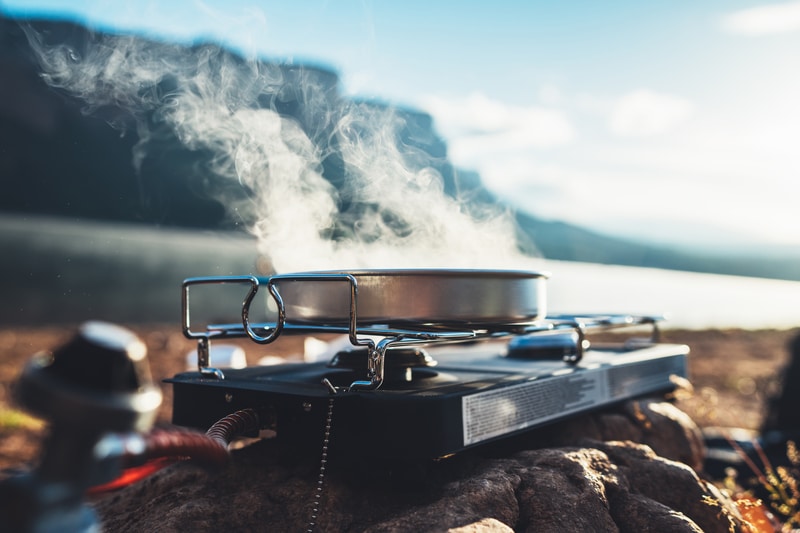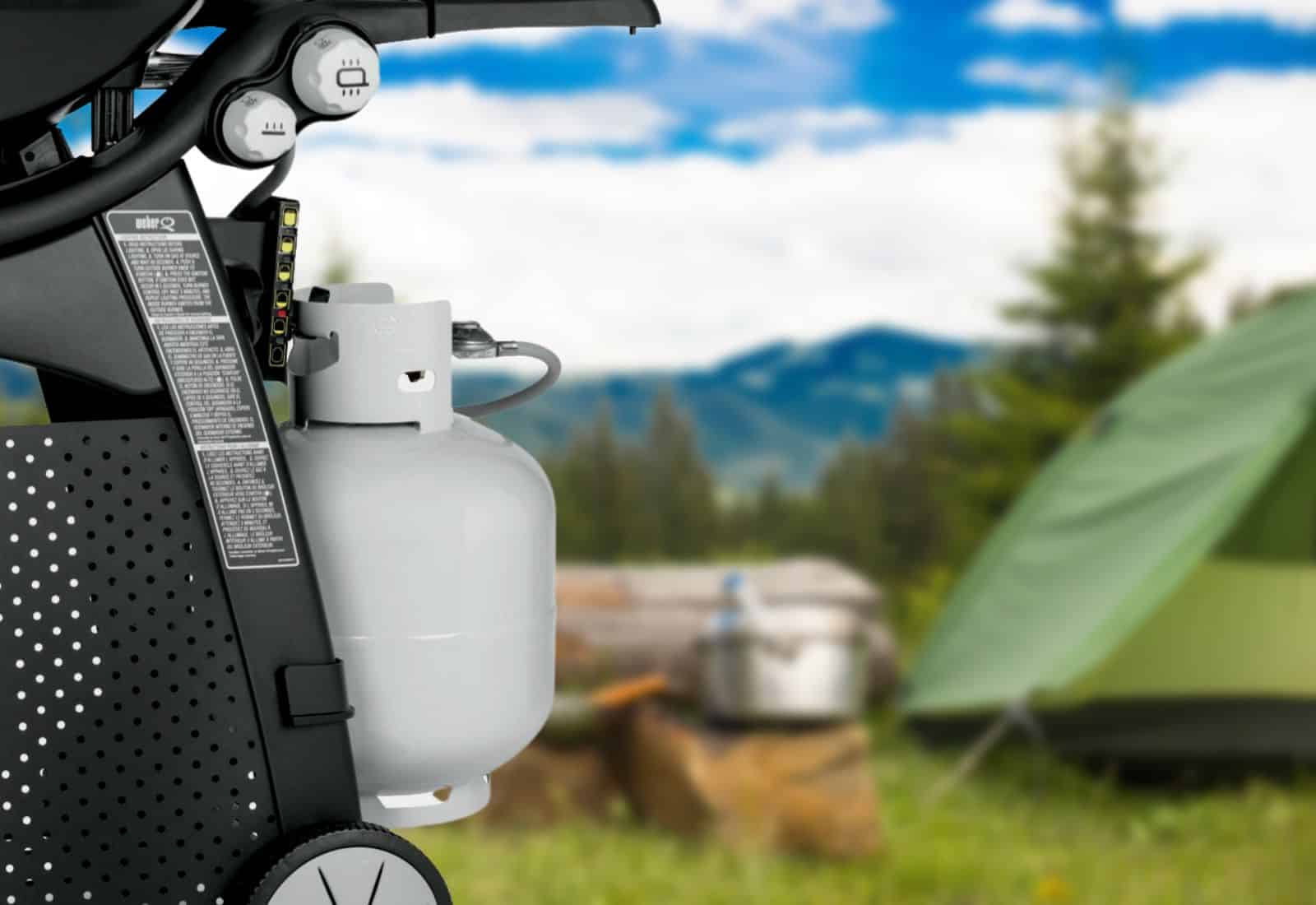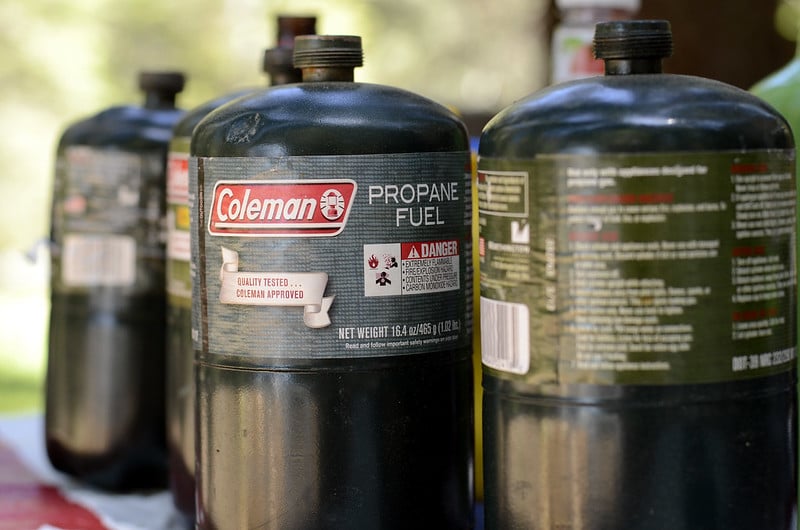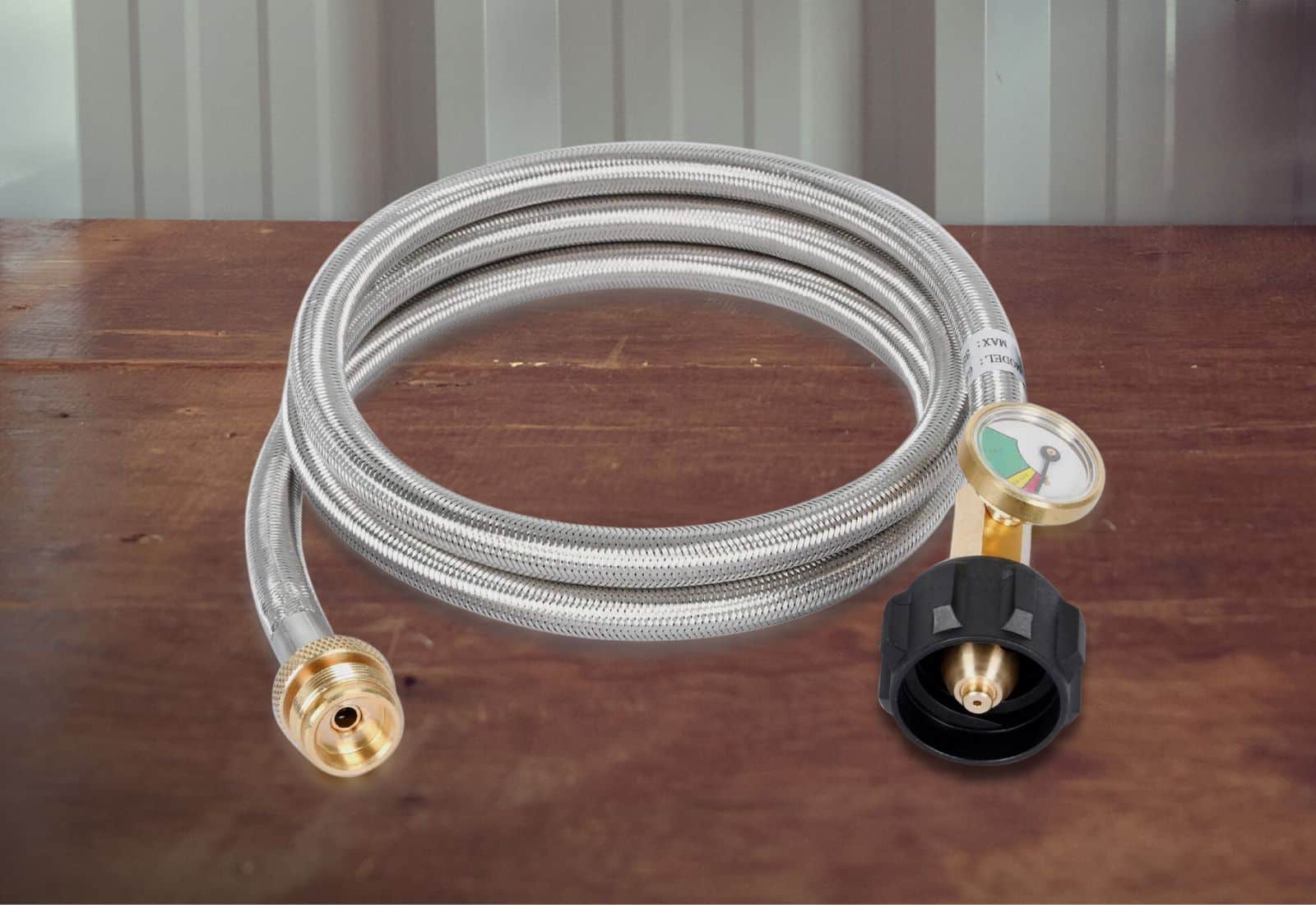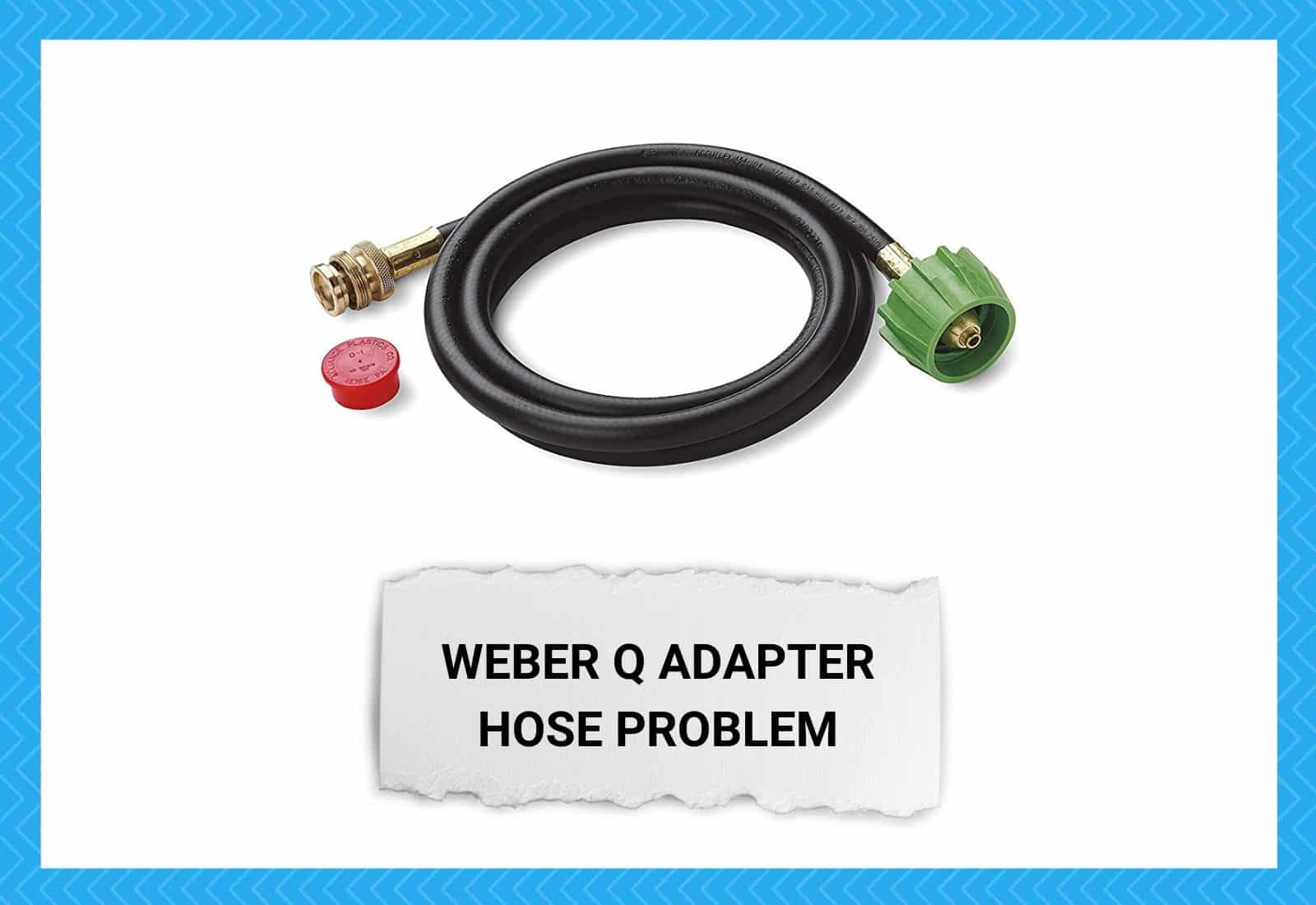
Cookouts are among the things you look forward to on a camping trip. You probably hold a backyard barbecue regularly, but admit it, doing it in the wilderness is more exciting.
Who wouldn’t love an intimate conversation with your peers or family around a fire in the mountains? Perhaps play a game of truth or dare, or scare each other with horror stories from grandma.
And while you’re at it, mom passes on the chops and sausages straight out of the grill. That’s a piece of American culture you’d want your children to experience and carry on.
There’s so much you can do if you set out prepared, bringing enough supplies to last your entire trip and all essential equipment for everyday chores, particularly cooking.
Nothing makes a cookout more exciting than having a top-of-the-range grill, like the Weber Q. A premium cast-iron grill, the Weber Q is one of Weber’s flagship products. It’s the gas barbecue for American campers because of its portability, clean flames, and straightforward controls.
If you’ve just recently bought a Weber Q grill and don’t know how to set it up, here’s a quick guide:
- The grill’s main body doesn’t require additional installation because it’s already fully assembled. All that’s left is to hook it up to the propane gas tank.
- First, you must ensure that the grill and the gas tank are switched off to prevent leaks. On your grill, look for the dial and line the off marking with the starter. On the gas tank, turn the valve until it’s tight toward the close.
- Assuming the grill has an adapter hose hooked up, insert the plastic ring connector into the service valve. Tighten it down to prevent gas and pressure from leaking.
- You can now switch the gas tank back on, and once you’re ready to use the grill, you can switch it on, too.
Everything should go smoothly from this point. The burners should produce flames evenly and without delay, and the gas tank shouldn’t create a hissing sound (that’s a sign of leak).
However, there are instances when no gas is coming into the grill, inhibiting it from producing flames. There are several explanations and fixes to this problem, but we will focus on the most common one—a faulty adapter hose.
You can only assume something is wrong with the adapter hose if you confirm everything else is working. For instance, check if your tank is not low on gas, as it is almost always the culprit.
Also, check if the burner tube is installed correctly. If it got disconnected from the gas line even just a bit, it will not produce flames.
The ignition system may be faulty, so you must shut off the valves to keep propane gas from leaking through the burner tube. It’s also possible that the regulator has hit a snag and needs a reset.
Finally, the valve must be clogged, making it hard to create a tight connection. All these scenarios are possible. But if you find nothing wrong, all signs point to the adapter hose, which isn’t that rare.
How to Fix Weber Q Adapter Hose Problem?
1. Loose connection
If your propane tank is full, but your grill isn’t receiving gas, the adapter hose is most likely not hooked up correctly. First, check if the plastic connector is tightly locked into the tank’s service valve.
And since it is made of plastic, there’s a chance it cracked while you’re tightening it. That crack will cause the connecter to loosen up, releasing the pressure required for gas to enter and pass through the hose.
This may also happen at the other end of the connection. Specifically, the adapter hose must be adequately attached to the grill’s own valve.
In fact, it’s more dangerous to have this section neglected than the connector on the tank because leaks here are close to the burner and could easily ignite. If that happens, the fire will eventually reach the tank and cause more severe damage.
2. The tank valve turned too quickly
Many Weber Q grill users claim that their grill fails to activate whenever they turn the tank’s valve too quickly. While this may seem hard to believe, it’s not impossible.
After all, the pressure from the tank must be just enough to push gas into the adapter hose. Remember that this hose is hardly an inch in diameter, so it will be difficult for propane gas to pass through abruptly.
It’s also possible that the sudden turn of the valve causes the tank to suck in some of the pressure, leaving the hose with little pressure to push propane gas into the grill.
Regardless of the cause, however, you should call a professional to check your tank and the adapter hose if this happens more frequently than usual. It could be dangerous to deal with unknowns that involve flammable gas.
3. Hose has damage
How long have you been using your Weber Q grill and tank? Was the adapter hose part of the package? Most adapter hoses for grills and propane gas tanks are made of plastic.
Although plastic takes hundreds or even thousands of years to decompose, it wears out faster than other materials. Your adapter hose may be too old to hold in the propane gas, letting some of it leak out.
Where do you usually store your cooking equipment? If you store it in an open cabinet or shelf, chances are squirrels, possums, or raccoons may have already mistaken the adapter hose for food.
They will nibble at it little by little until their sharp teeth finally pierce through. This is why keeping all cooking equipment in a secure and dry storage compartment is crucial.
Why not use a propane bottle instead?
It’s safe to assume that using a propane tank connected to a Weber Q grill with an adapter hose has its share of risks. But this begs the question, why not use a bottle tank instead? Not only is a bottle tank easier to attach to the grill’s regulator, but it’s also more space efficient.
Two reasons why a bottle tank isn’t ideal:
- It’s too small. The smallest bottle can only last about four hours. It’s not your ideal choice if you’re going on a weeklong camping trip. The slightly bigger one can last longer, but bottle tanks can’t be any bigger than that, or the Weber Q grill might flip over.
- This option makes the gas tank very close to the burner. For sure, Weber considered the risk of explosion or fire when they designed their grills, but it will keep any cautious user on edge throughout the cookout.
Addition tips: how to use your Weber Q barbecue grill
Using a grill like the Weber Q is pure common sense. But like any other machine that involves fire and propane gas, it’s best to be specific about the dos and don’ts.
Nevertheless, it’s the only way to fully enjoy using your equipment and cooking with your family or friends.
- Differentiate each Weber Q model. Weber Q has three product series, each slightly bigger than the next. If you’re traveling and camping out with just one person, the smallest series—Q1000 and Q1200—might suffice. The Q2000 and Q2200 series is more suitable if you’ll be cooking for several people. The biggest unit, ideal for three to four people, is the Q3200 series.
- Keep the lid closed. Even though you’re barbecuing and used to doing it on an open flame, it’s inefficient if you use a Weber Q grill. Keeping the lid closed traps the heat, which helps cook meals evenly. If you use the grill with the cover open, you’ll keep turning over the food and waste too much gas.
- The burner tube sits right below the grate. Oil and grease can freely drip onto it when roasting meat or fatty vegetables. This grease can block some of the burner’s holes and reduce the flames. Wash the burner tube from time to time or before you use it to maximize its firepower.
- If you’re tired of keeping vermin from eating your adapter hose, it’s time to replace it with a braided stainless steel adapter hose. Not only is this option not appealing to animals, but it also won’t rust. If you are troubleshooting an adapter hose that isn’t conveying gas and ultimately found the need for a brand-new hose, then make sure your replacement hose is the metal one.
A dysfunctional Weber Q adapter hose is just one of the surfeit of problems you will encounter as soon as you start living a travel-junky lifestyle. Especially if you own an RV, you’ll have more complicated equipment to maintain and repair.
So learn basic repair and maintenance to arm yourself with the proper knowledge when problems like this occur. But acknowledge that you can’t fix everything, and there will be situations where hiring an expert is more beneficial.

